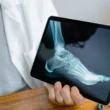You’ve probably seen many great examples of healthcare website design, and are now wondering how to go about creating one of your own. A great website will incorporate high-quality images, a mobile-friendly design, and a sticky ‘contact us’ button. These features show that healthcare organizations can make their site stand out from the crowd, while still maintaining a clean and authentic look. Read on to find out more about these aspects of good website design and what you can do to make your own!
ADA compliance
There are several important benefits of ADA compliance in healthcare website design. First of all, it opens the door to millions of new potential customers with disabilities. If your website is inaccessible, potential patients with disabilities may move on to a competitor, causing you to lose revenue. Additionally, the ADA requires your website to follow more than 60 guidelines for accessibility. To ensure compliance with the guidelines, contact an experienced web development agency and let them help you create an accessible website.
Mobile responsive design
A mobile responsive healthcare website design is crucial for a number of reasons. First, it’s important to be visible online, since most internet users use mobile devices to search for information. If your website is not mobile-friendly, Google will use the mobile version of your site to index and rank it. If this isn’t done, your ranking will be low. Also, 92% of all traffic comes from the first page of search results, so a non-responsive site will fall behind your competitors.
Interactivity
While most of our interactions take place online, many patients still miss the personal touch of a live interaction. The Coronavirus pandemic has only compounded this sense of alienation. That’s why it is so important to incorporate interactivity into your healthcare website design. By adding real images, you can make your website appear more human and increase engagement. There are many ways to integrate interactivity into your website design. Consider these suggestions for a more engaging website.
Cleanly organized CTAs
A health care website must be professionally designed to attract new patients. This means that the CTAs on your website should be both actionable and aesthetically appealing. Many health care professionals don’t have the design experience required to create a standout website. Rather, they should spend their professional development hours on health-related education and enrichment, so it is best to hire a web design service to help you.
Color palette
A health care website design must be professional but still inviting. In addition to using strong colors, it should also include images that encourage action. Warm tones such as coral, peach, caramel, and golden-hued green can add a cozy feel to your website. Colors in the Hunger Project are an example of how to use warm tones to design a healthcare website. Those who have seen the film know that the central color is a dusty blue, but the film also uses accents of lime and magenta. In addition to this warm and soft color, healthcare website design should also incorporate warm tones such as peach, caramel, and golden-hued green.








